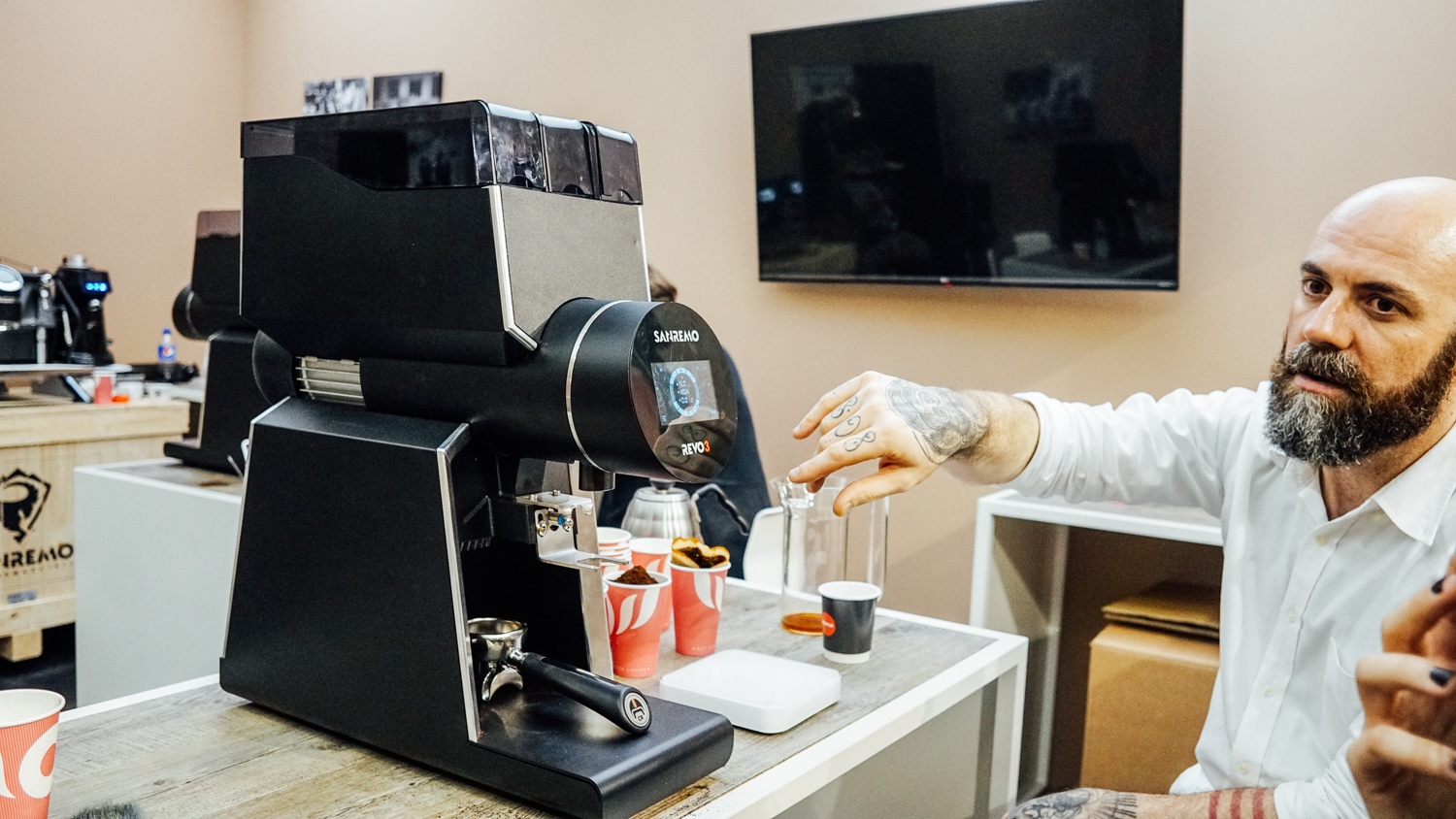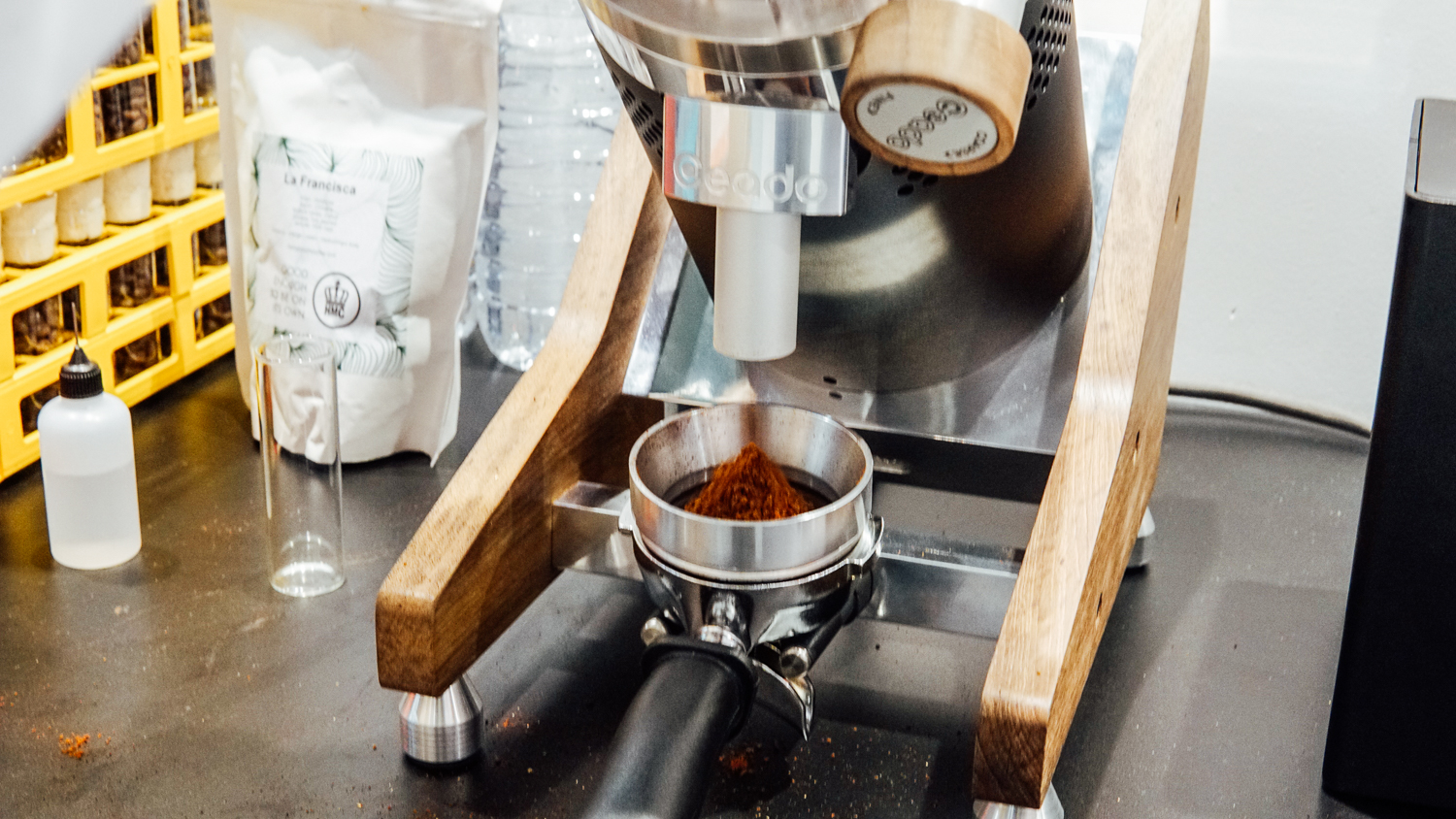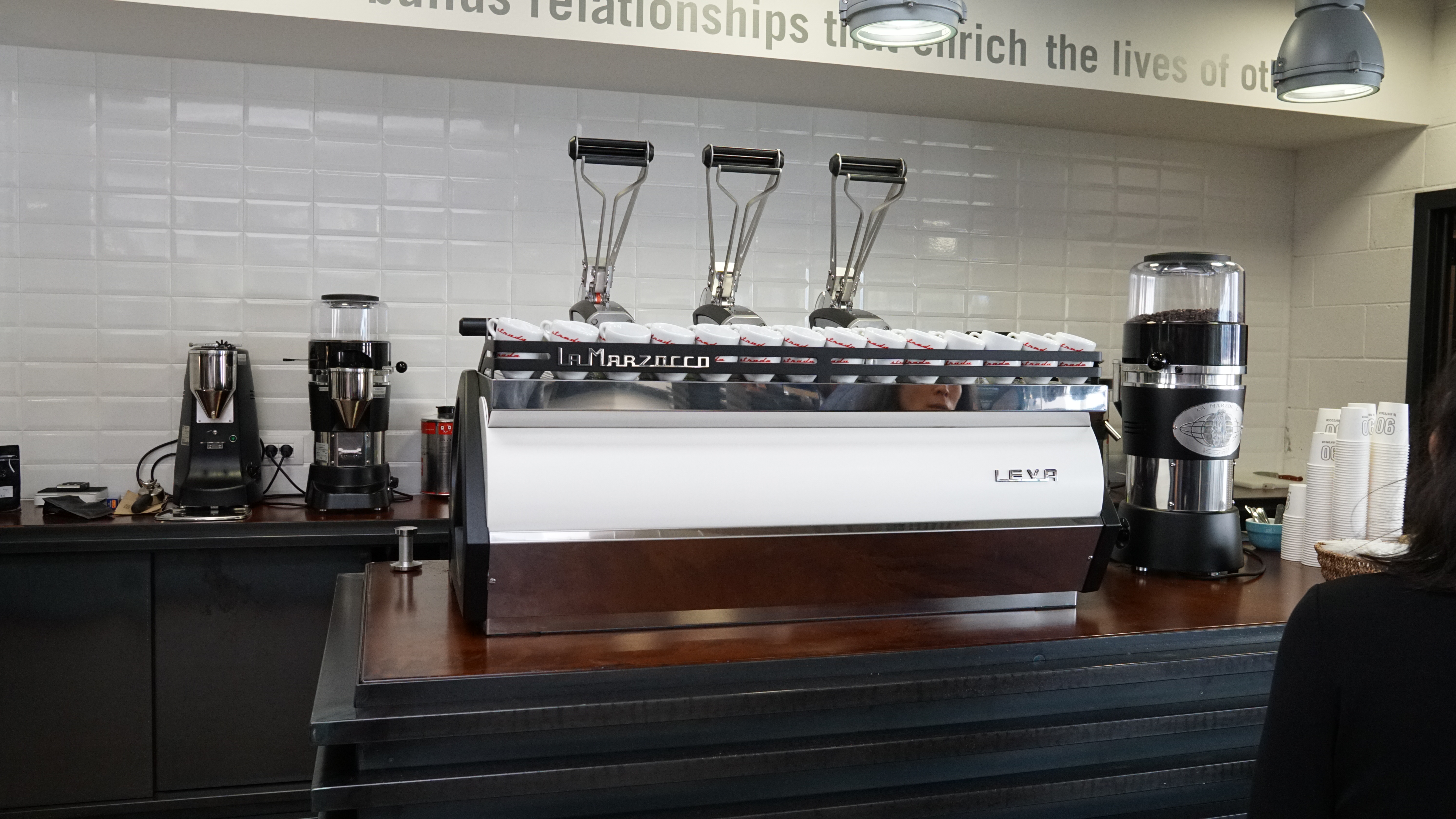Highlights from HOST Milan 2017
This past week, we were lucky enough to attend the biannual HOST trade show in Milan. We saw tons of exciting new products and announcement at the show, so here are our selected highlights!
This past week, we were lucky enough to attend the biannual HOST trade show in Milan. It’s one of the largest Hotel, Restaurant, and Catering shows in the world, and you could say it’s a bit like a very jazzed-up SCA Expo – in fact, it’s nearly fifteen times as big as the SCA Expo in Seattle. Coffee equipment manufacturers from all over the world have lavish booths and plenty of gear to show off, and often this show is where new products make their global debut. Sometimes those products are still in early development, either as a concept or roughly working prototype, but some are indeed ready for retail soon after the show ends. This year was no exception: we saw a great array of new and exciting products, some of which are still a few years out from production, while you may very well see others in stock at Prima in just a few months! Without further delay, here are some of our top highlights from the show.
Nuova Simonelli Mythos 2
Nuova Simonelli teased the Mythos 2 ahead of the show, so we knew we’d be in for a treat when we arrived at their booth. The new updates on the Mythos are numerous, but perhaps the most notable new features are the gravimetric grind-by-weight dosing, adjustable grind speed, and new, larger burrs. While the base model retains the time-based dosing of its predecessor, the gravimetric dosing is an exciting new option and will be helping break new ground in the commercial market. Other grinder manufacturers have been showing their prototypes and retail products with a similar feature for the last few years, so when Nuova Simonelli releases the Mythos 2 we will officially have a high-end commercial espresso grinder with weight-based dosing.
In its current form, the gravimetric tech will automatically tare your portafilter and grind the requested dose, regardless of grind size. It is somewhat sensitive to vibration and movement, but we were informed that this can likely be cleared up by changing the programming and how the load cell accounts for noise and vibrations. As before, the new 85 mm burrs are also coated for longer life and are mounted at an angle rather than horizontally or vertically. A newly designed clump-crusher is fitted into a new chute design, both are meant to be easier to remove for cleaning or replacement as needed.

In regard to the grind speed adjustment, Nuova Simonelli took two different positions as to why the feature matters. In one case, it’s helpful for kicking up your production speed. High volume environments will benefit from running the grinder at its maximum 1200 rpm to keep up with demand. However, that extra speed translates to more heat in the grinding chamber, and more variance in performance between peak periods and lulls. Most shops will likely not need to utilize the full rpm output available, especially as we consider the second case they make: altering grind seed can lead to distinctive differences in flavor, so changes to grinding rpm can be another factor used for dialing in your coffees. At the booth, a coffee was presented to us in three different ways: each had the same dose and yield, but each was ground at a different rpm. The results weren’t necessarily jaw-dropping, but there were distinct differences in each cup that wouldn’t necessarily be due to human error in production. We’d love to test the idea more, and can’t wait to see more of the Mythos 2 in action.
Sanremo Revo
Another new and exciting grinder which should hit in 2018 is Sanremo’s Revo. A prototype was debuted back at the 2015 HOST expo, which promised variable RPM control, perfectly aligned burrs, and even custom blending from up to three hoppers. This year, those features seem to have remained in play.
In a room adjacent to the main Sanremo booth, the Revo 1 and 3 were set up for demonstrations of their current abilities. While neither is a fully finished product at this point, what Sanremo had to show for two years of work was rather impressive. Both grinders boast many of the same features: 98 mm coated steel burrs, electronic grind size adjustment, adjustable burr RPM, Acaia Orion dosing tech inside, a touch screen control panel and multiple programmable dose settings. The core difference between the Revo 1 and 3 is the hopper: as each name indicates, you get either one large hopper, or 3 modular hoppers and corresponding dosing chambers within. On the Revo 3, the grinder can blend from each hopper or dose from only one. So the grinder could be used as a lab tool, for instance, to help dial in the new seasonal espresso blend. There’s also a manual chute to add a dose in manually, bypassing the hopper.
Pricewise, the Revos are meant to be rather competitive for the high-end commercial grinder market. Sanremo told us that, while US pricing is not entirely set in stone, they expected them to fall somewhere between $2-3k USD, likely to compete with the EK43 and entice customers with a larger suite of features. Release is fuzzy as well this early, slated for sometime later in 2018, but we expect to hear more in April at the Seattle SCA Expo.
Astoria Storm
If you thought Astoria was just another humble espresso machine manufacturer, you would have easily been caught off-guard by the bustle and buzz at their booth at HOST. The Storm, Astoria’s new, feature-packed machine, garnered a great deal of attention this year. Modeled off the internals of the Plus 4 You machines, the Storm seems to have a little bit of everything you could want in an espresso machine. It’s stylish, it’s got wood details, it has touchscreen group displays, it has pressure profiling, volumetrics, secondary steam boilers – the works!
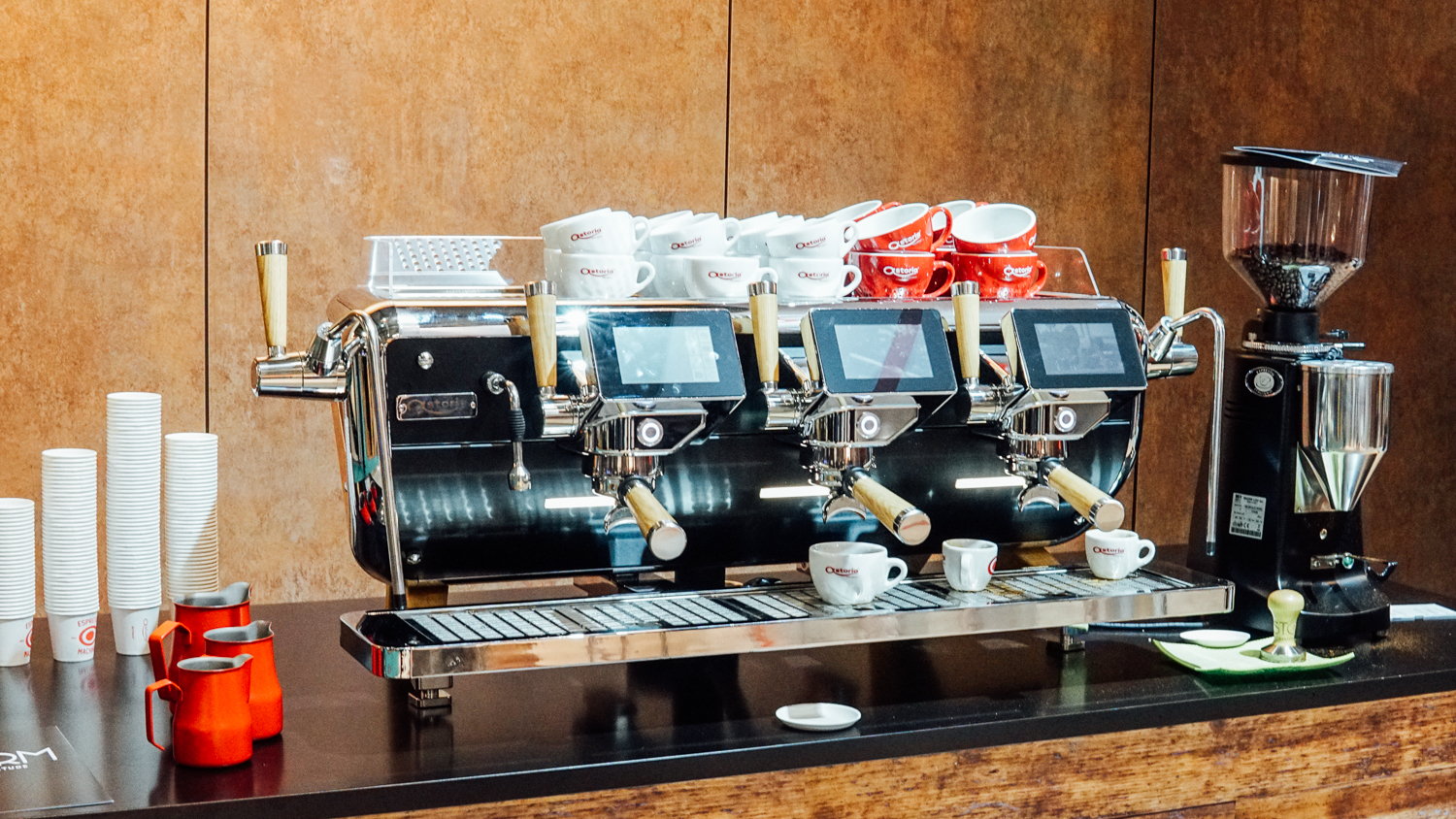
The word at Astoria’s booth is that the Storm already has World Coffee Events certifications, meaning it’s ready to bid for a spot as the official sponsor machine for any of the WCE competitions. Whether we see a future World Barista Champion pulling shots on a Storm remains to be seen, but until then we have a lot of features to mull over. The more decked-out FRC version has a group-side lever which can be used to manually control extraction pressure, which is displayed on the screen as the shot progresses. When dialing in, the user can manually program a profile, then save it for easy access from the touch panel, or even override the lever actuator to run the profile as well. This means that there’s both plenty of control available for finely tuning shots, as well as practicality for busy shops who need consistent and reliable shot programs. You can bet we’ll be keeping tabs on this one as it gets ready for launch.
Mazzer Robur S
Another update we weren’t quite expecting came in the form of Mazzer’s refinements of the Robur. Long held as the quintessential espresso grinder for high volume cafes, the Robur is designed to rip through coffee, though perhaps finesse isn’t quite its strong suit. The new S models don’t quite correct all the misgivings that might come with the platform, but there are some really lovely touches here that may just woo you.
Let’s get down to brass tacks: it’s still a Robur in there. Same burrs, same grind profile, same flavor (for the most part, and we’ll get to that). It’s just as big as before, and just as fast as well. We even have the same screw-style adjustment with that big collar, so it’s probably still a little tough to make small changes when dialing in. Now, that aside, here’s all the really cool stuff:
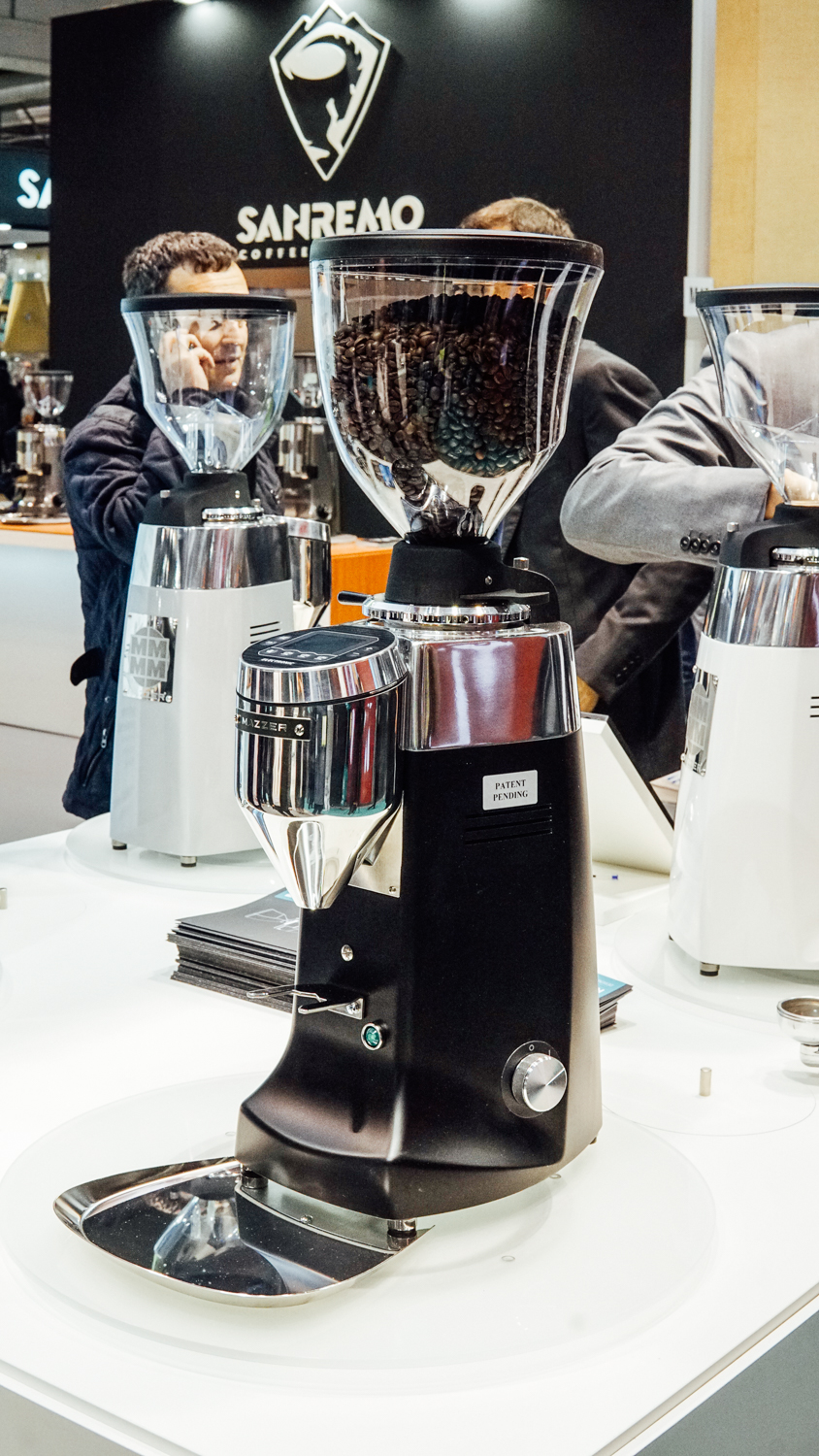
The electronics panel is completely new, and borrows a good deal from the ZM grinder. We still have programmable timed dosing, now with three presets and a manual pulse button. There's also an option to set a pause state while dosing - the grinder will grind for a few seconds, then pause so you can settle, distribute, what-have-you, and then will resume grinding when you hit the button again. There are a lot more features in the menus as well, like lifetime grind cycles, burr maintenance reminders, even wifi connectivity to sync up data if you have a bunch of grinders across multiple shops.
The grinder body is updated as well, now featuring a separate block for the burr housing, which is meant to cut down on heat transferred from the motor. Given how hot a grinder this size can run, that could mean much more consistent shot flavor as things heat up through the day. There’s also a new patented cutout for the top burr, which allows a tech to remove the entire upper burr and mounting for cleaning, meaning you don’t need to change your grind setting afterward. The settings on the adjustment collar are now stamped on a separate ring, so they can be shifted around as needed - meaning you can shift your zero point as the burrs wear over their lifespan, and then shift it back again when a new set is installed. A new polishing treatment on the dosing funnel of the electronic model also helps cut down on static cling, making for cleaner dosing.
Oh, and let’s talk retention for a second: Mazzer claims they’ve reduced the Robur’s retention by 52%. If you’ve ever used a Robur on bar, you know what happens if you go from a peak period or rush to a slow period, and you know how much you have to purge to make those grind setting changes. This reduction means that there’s now around 15-18 grams of retained coffee (still a lot more than some other grinders, yes), whereas before you might hit 30 grams. That’s pretty significant indeed!
Mahlkonig
Mahlkonig hit us with three solid highlights this time: we have the brand new EK43 S, an updated and optimized EK43, and the grind-by-weight K30 concept we saw at HOST 2015 was back and better than before.
The new EK43 S is essentially a short EK43. It’s got the same internals, same performance, but it now has a shorter stature for those who don’t have as much vertical clearance to work with. Mahlkonig is also working on a short dosing funnel for the bayonet hopper attachments, which will cut down the height even further. Mahlkonig Germany is taking orders in January for these, and expecting to ship in February, but availability in the US might trail that by a few months. Mahlkonig USA told us they expect stock to be in around April.
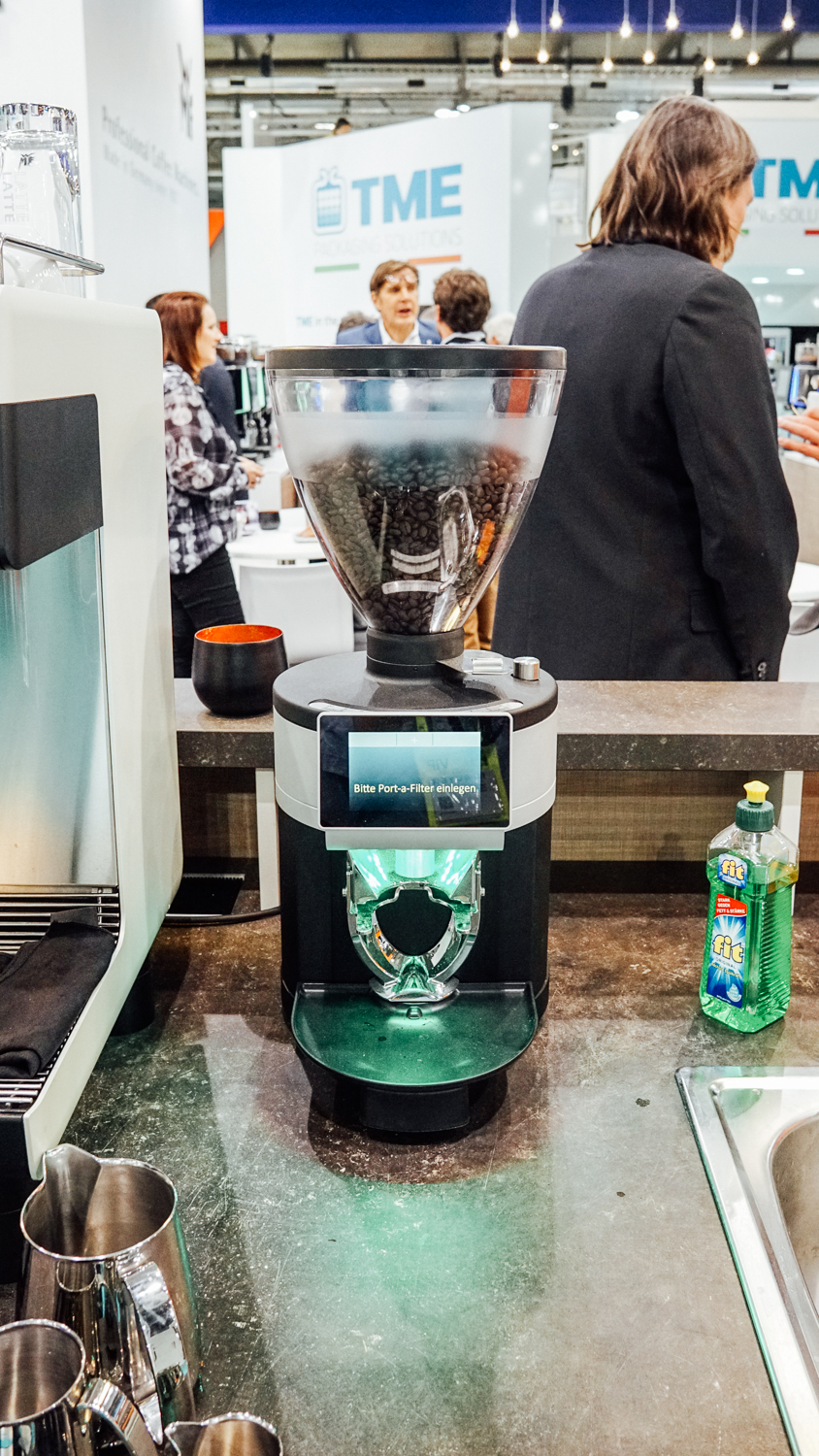
As for the EK43, our beloved grinder is seeing some new upgrades this year. Inside the grind chamber will be a new burr mount and pre-breaker. They’ve been redesigned to cut down on stress on the motor, so we can probably expect some minor performance differences, and perhaps even grind quality differences since the pre-breaking surface is an overall different profile from the previous steel spring. There are also new shear plates which come installed, made of steel and meant to hold up to higher stress than before. Also updated are the on/off buttons, which now have new switches and button plates that will last more cycles and presses than the previous iteration. Much of this is certainly due to the affinity for using an EK43 for small doses for espresso and pour over grinding, so it’s great to see Mahlkonig responding by updating the machines to better handle that kind of use.
Finally, we have the K30 grind-by-weight, which was actually on display at the WMF booth elsewhere at the show. Mahlkonig says this grinder is already out in the wild, but mainly at large chain stores for the time being. They’re refining the scale function and don’t think it’s quite ready yet for exacting specialty coffee shops, so they’re deploying it more carefully and gathering feedback for now. The grinder itself is a K30 2.0, complete with touchscreen functions, with a load cell built into special portafilter forks. It is phenomenally easy to use – just set the portafilter into the forks as instructed, wait for the indicator light to turn green, then select your desired dose. It’s fast, easy, and effective, but it sounds like there are still some issues with isolating the scale against vibrations (e.g. your fellow barista tapping a pitcher of milk or knocking out a puck), so those refinements need to be made before it’s ready for a wider market.
Ceado
The E37Z Hero was quite the sight to behold as we ventured into the Ceado booth. It seems that as our expectations change regarding what a grinder should be able to do, so do our expectations regarding what a grinder will look like. The E37Z is a large cylinder, mounted on an angle on a pair of stout legs, connected to a hefty black box on the counter beside it. It’s still a prototype for the most part, so the overall design may change, but it is a commanding presence on the counter and it certainly looks like the expensive and precise piece of equipment that it is.
Inside the grind chamber are 83 mm flat burrs, and both the burrs and chamber are coated in Ceado’s DLC coating. There’s a six-point screw system for burr alignment, variable RPM on the control box, a funnel and chute instead of a hopper, and there’s a knocker on the discharge chute to clear any clinging residual grinds. This beast is made for single dosing, for precisely tuning your espresso to get the very best out of it. At the booth, the barista on duty had his doses pre-measured and stored in tubes in a test tube rack. Each dose got a quick spritz from a water bottle (known as the Ross Droplet Technique, to cut down on static), ground directly into the portafilter basket, tapped to settle the grounds, then distributed and tamped. This was a meticulous and exacting process, something quite familiar to those of us who geek out over espresso at home, and it was honestly a little odd to see it on display at a trade show booth.
The whole thing has us extremely excited to see more of the E37Z at upcoming shows. Details on pricing and availability were sparse this time around as well. Looks like we’ll just have to come see it again in Seattle!
La Marzocco Leva
This is La Marzocco's 90th year, and we've seen them celebrating for months now: from a year of residencies at their Seattle KEXP Cafe, to big parties in Seattle and just last week in Milan. But nothing suits La Marzocco's celebration better than the release of new, exciting espresso machines. And that's precisely where the new Leva comes in. First announced at their 2015 Out of the Box event in tandem with HOST 2015, the Leva was formerly known as La Curva. Back then, it looked a little like a Frankenstein's monster of an espresso machine - with a cable clutch on the levers, bright green acrylic elements, and pressure gauges stuck somewhat haphazardly to the group blocks. In just two years, that somewhat rough and tumble caterpillar has transformed into a more dazzling butterfly, and it's now ready for retail release.
The Leva comes in two flavors: the S and the X. Both feature a new group with a spring lever, but not like the lever machines of old. Instead, you now have a lever and clutch system, which allows the user to choose from 6 engagement points for the piston to be cocked, as well as removes the risk of the spring popping the lever back up when flushing an empty group. Both also feature La Marzocco's familiar exposed saturated groups, but of course now there is a prominent fitting for a piston sticking out of the top. Moving to a lever platform is an interesting throwback for La Marzocco, whose most recent machines include the Strada AV and Linea Mini. Of course, being La Marzocco, there's also some really cool tech to be found in these seemingly-retro machines. In particular, the X model features smart PIDs on the brew boilers, as well as per-group displays that show a graph of pressure over time during extractions. These graphs can be saved for later (up to 4 per group), and set as a "ghost" profile to display on the active graph to compare the current shot with a reference shot.
The Leva stand at their booth was absolutely overwhelmed by curious show-goers and coffee pros all weekend. This was a big release to be sure, and the crowds gathered every day to see it in action, to taste the coffee, and for some, to try their hand at pulling some lever shots. One question hovered around the booth while we were there, however: why go back to the lever, especially when we admit it can create inconsistencies? Baristas at the booth noted that it was difficult to dial in because there can be so much variance in lever-pulled shots. This is a very manual way to make espresso, and small inconsistencies in technique can mean big flavor changes in the cup. The live graphs on the Leva X showed this in real-time, as the profiles of shots pulled back to back rarely matched up to the ghost profile from when the coffee was dialed in earlier. We spoke to a barista who simultaneously enjoyed the challenge of figuring out a new machine with these sorts of quirks, but also wished he could more consistently do his coffee justice. The Leva is definitely an exciting new machine, but we're looking forward to hearing more impressions from coffee pros given its more old-school take on espresso production. This seems to be the kind of machine that will take a little getting used to before it really shines on bar.
Recent Posts
-
Coffee Carts & Corgis | The Loyal Cup's Journey to Success
Dec 11th 2025 Written by Mac AubreyThe path to launching a mobile coffee business often begins with passion, community, and the rig … -
Video Overview | Nuova Simonelli Oscar II Espresso Machine
Oct 30th 2025 Written by Ryan FelbingerI'm Ryan from Prima, and this is the Nuova Simonelli Oscar II Espresso Machine. At Prima, we know … -
Spooky Brews | Black Charcoal Latte & S'Mores Iced Latte
Oct 24th 2025 Written by Mac AubreyHey there - Mac from Prima here! Welcome to Spooky Brews! Today we’re making two Hallo …



